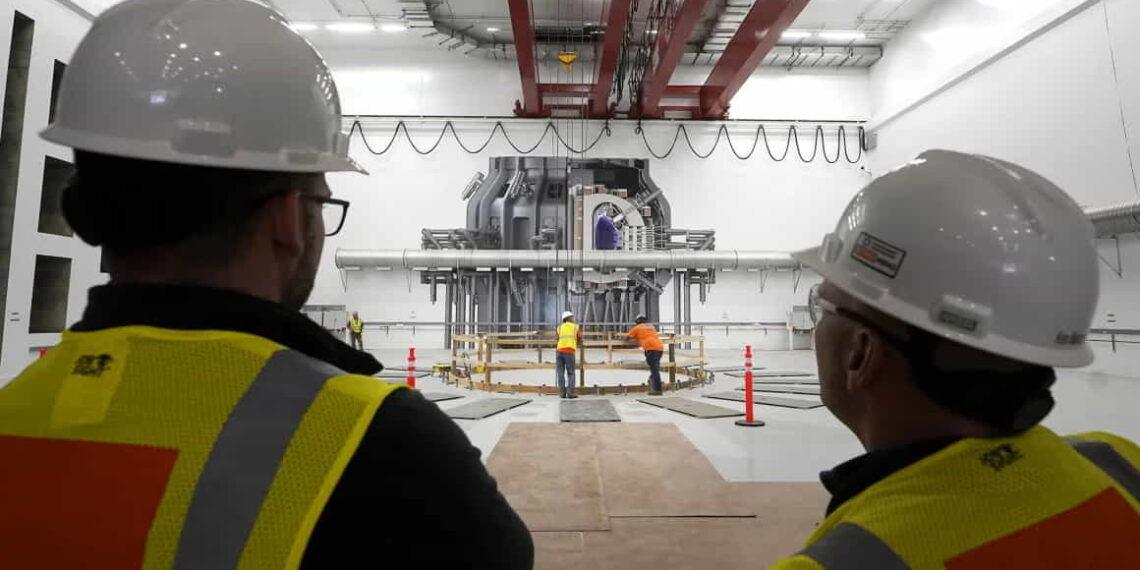Virginia to Host World’s First Grid-Scale Nuclear Fusion Power Plant
In a groundbreaking move for clean energy, Virginia is set to become the location of the world’s first grid-scale nuclear fusion power plant, according to an announcement from Commonwealth Fusion Systems (CFS) on Tuesday. If all goes to plan, the facility will begin generating electricity by the early 2030s, marking a major step forward in the quest to harness nuclear fusion as a viable energy source.
CFS, a leading nuclear fusion startup, will invest billions of dollars to build the plant near Richmond, Virginia. Once operational, the fusion facility will produce 400 megawatts of power, enough to supply around 150,000 homes, CFS CEO Bob Mumgaard said.
“This will be the first time fusion power is available at grid scale,” Mumgaard stated, calling the announcement a “historic moment” for both Virginia and the world. Virginia Governor Glenn Youngkin echoed these sentiments, praising the project as a major leap in the transition to clean, sustainable energy.
A New Era for Nuclear Fusion
The planned plant in Virginia represents a significant advancement in the commercialization of nuclear fusion, a process that powers the sun and promises to provide nearly limitless clean energy. Fusion involves fusing hydrogen atoms together to release energy, with the primary technology relying on a donut-shaped machine called a tokamak. Unlike fission— the nuclear process used in today’s power plants—fusion does not produce long-lived nuclear waste and does not contribute to climate change.
Despite its potential, the path to making fusion energy a reality has been challenging. For decades, fusion has been referred to as “decades away,” and turning it from a laboratory experiment into a practical energy source remains an enormous challenge. But CFS is pushing forward, determined to meet this challenge.
“We know nothing happens overnight in fusion,” Mumgaard said, acknowledging the hurdles ahead. “But we are moving quickly.” CFS, which spun out of MIT in 2018, has already raised more than $2 billion and is making substantial progress. The company is working on a tokamak designed to achieve “net fusion energy,” meaning it will produce more energy than it consumes. CFS plans to demonstrate the first plasma—the superheated gas where fusion reactions occur—by 2026 and hopes to achieve net fusion energy shortly thereafter.
Virginia’s Role in Fusion Energy’s Future
The James River Industrial Center in Virginia was chosen after CFS explored over 100 global locations. The site is owned by Dominion Energy, which will lease it to CFS and provide technical assistance. The region was selected due to its growing economy, skilled workforce, clean energy goals, and the opportunity to connect the plant to the grid, especially after a nearby coal plant is retired.
The decision to build in Virginia is seen as a pivotal moment. “In the early 2030s, all eyes will be on the Richmond region as the birthplace of commercial fusion energy,” said Mumgaard. Additionally, Virginia is home to the world’s largest data center market, which increasingly demands vast amounts of energy. According to a Boston Consulting Group analysis, data center electricity consumption in the U.S. is expected to triple by 2030, requiring enough power to supply around 40 million homes. The fusion plant could play a key role in meeting this growing demand for clean power.
CFS views this Virginia plant as the first step in a larger vision. The company plans to eventually deploy thousands of fusion plants worldwide to support global energy needs.
Fusion Energy: The Road Ahead
While CFS and other private fusion companies are working hard to accelerate fusion commercialization, experts caution that the timeline remains uncertain. Jerry Navratil, a professor at Columbia University, notes the distinction between generating fusion energy and creating a safe, reliable system for putting power on the grid. “Fusion startups tend to be aggressive in what they promise,” he explained, “and there’s a big difference between demonstrating energy from fusion and having a practical, operating system.”
Mumgaard recognizes the challenges ahead but remains optimistic. “There will be bumps along the way, but now we have a specific location and a plan for the next chapter in the fusion journey,” he said.
The Virginia-based fusion power plant represents an exciting leap toward a cleaner energy future. With continued investment and innovation, it could help bring nuclear fusion from the realm of science fiction into the practical, sustainable energy solutions needed to combat climate change.
This article was rewritten by JournosNews.com based on verified reporting from trusted sources. The content has been independently reviewed, fact-checked, and edited for accuracy, neutrality, tone, and global readability in accordance with Google News and AdSense standards.
All opinions, quotes, or statements from contributors, experts, or sourced organizations do not necessarily reflect the views of JournosNews.com. JournosNews.com maintains full editorial independence from any external funders, sponsors, or organizations.
Stay informed with JournosNews.com — your trusted source for verified global reporting and in-depth analysis. Follow us on Google News, BlueSky, and X for real-time updates.














